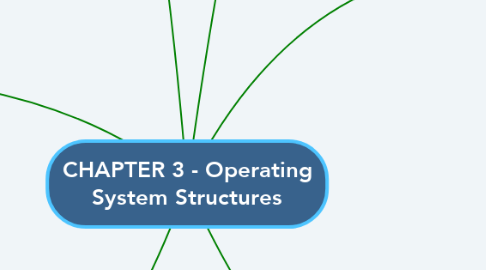
1. Types of System Calls
1.1. Process control
1.2. File management
1.3. Device management
1.4. Information maintenance
1.5. Communications
1.6. Protection
2. 6 Operating System Services
2.1. User interface
2.2. Program execution
2.3. I/O operations
2.4. File-system manipulation
2.5. Communications
2.6. Error detection
3. System Calls
3.1. Purpose
3.1.1. To be used by an application program to invoke a function provided by operating system.
4. Communication Models
4.1. Message passing
4.1.1. - Communication takes place by means of messages exchanged between the operating system.
4.2. Shared memory
4.2.1. - A region of memory that is shared by cooperating processes is established.
4.2.2. - Processes can exchange information by reading and writing data to the shared region.
5. Operating System Structures
5.1. Layered Approach
5.1.1. Advantage
5.1.1.1. o Simplicity of construction and debugging
5.1.2. Disadvantages
5.1.2.1. o The careful definition and interaction of the layers o Less efficient
5.2. Microkernel
5.2.1. Benefits
5.2.1.1. Extensibility
5.2.1.1.1. o Allows the addition of new services
5.2.1.2. Flexibility
5.2.1.2.1. o New features added o Existing features can be subtracted
5.2.1.3. Reliability
5.2.1.3.1. o Modular design o Small microkernel can be rigorously tested
5.2.1.4. Portability
5.2.1.4.1. o Changes needed to port the system to a new processor is changed in the microkernel - not in the other services
6. Operating System Design Goals
6.1. User goals
6.1.1. operating system should be convenient to use, easy to learn, reliable, safe, and fast.
6.2. System goals
6.2.1. operating system should be easy to design, implement, and maintain, as well as flexible, reliable, error-free, and efficient.

